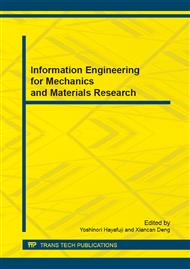p.165
p.172
p.176
p.181
p.185
p.191
p.196
p.204
p.209
Automata for Modeling Reversible Probabilistic Processes
Abstract:
This paper presents a construction of an automaton that aids the modeling of probabilistic processes which exhibit reversibility during their computations. A probabilistic process defines a probability distribution over the uncertainties of its computations. This characteristic also makes them distinct from nondeterministic processes. But, uncertainties hinder the assurance about the quality of such systems gained by the traditional testing methods. Further, reversibility acts as a catalyst in such scenarios by raising the possibility of achieving the states which were inaccessible in past. Thus, the verification of such systems is necessary and this requires the system to be formally specified. In this respect, proposed work provides the constructs for modeling probabilistic environments and reversibility. Former is achieved by the introduction of discrete probabilities in classical automata theory, and later is implemented by giving the constructs of memory. It also provides the constructs for representing non-determinism by specifying the choices over several probability mass functions for a state.
Info:
Periodical:
Pages:
185-190
Citation:
Online since:
September 2013
Authors:
Price:
Сopyright:
© 2013 Trans Tech Publications Ltd. All Rights Reserved
Share:
Citation:


